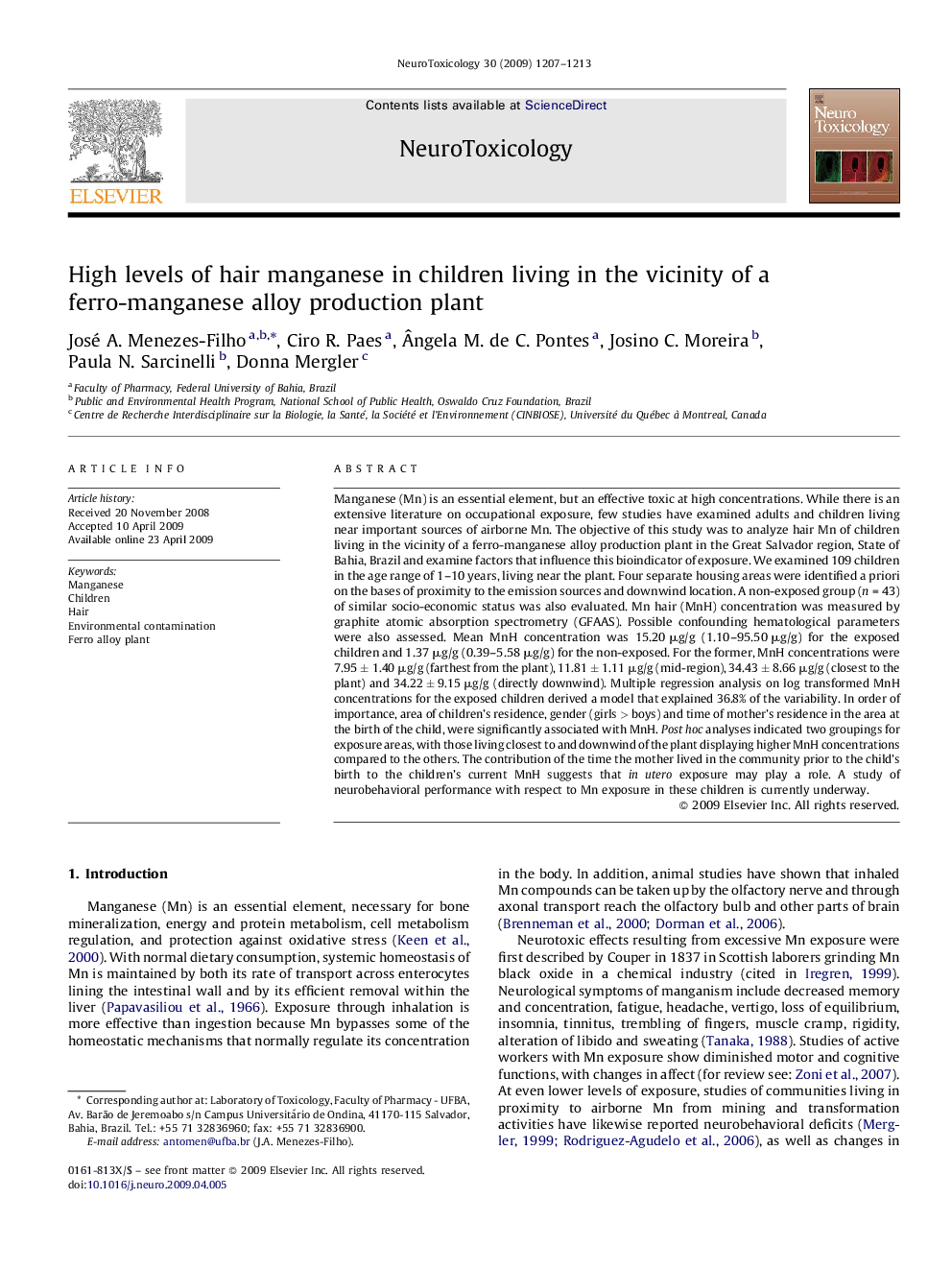| کد مقاله | کد نشریه | سال انتشار | مقاله انگلیسی | نسخه تمام متن |
|---|---|---|---|---|
| 2590029 | 1562061 | 2009 | 7 صفحه PDF | دانلود رایگان |

Manganese (Mn) is an essential element, but an effective toxic at high concentrations. While there is an extensive literature on occupational exposure, few studies have examined adults and children living near important sources of airborne Mn. The objective of this study was to analyze hair Mn of children living in the vicinity of a ferro-manganese alloy production plant in the Great Salvador region, State of Bahia, Brazil and examine factors that influence this bioindicator of exposure. We examined 109 children in the age range of 1–10 years, living near the plant. Four separate housing areas were identified a priori on the bases of proximity to the emission sources and downwind location. A non-exposed group (n = 43) of similar socio-economic status was also evaluated. Mn hair (MnH) concentration was measured by graphite atomic absorption spectrometry (GFAAS). Possible confounding hematological parameters were also assessed. Mean MnH concentration was 15.20 μg/g (1.10–95.50 μg/g) for the exposed children and 1.37 μg/g (0.39–5.58 μg/g) for the non-exposed. For the former, MnH concentrations were 7.95 ± 1.40 μg/g (farthest from the plant), 11.81 ± 1.11 μg/g (mid-region), 34.43 ± 8.66 μg/g (closest to the plant) and 34.22 ± 9.15 μg/g (directly downwind). Multiple regression analysis on log transformed MnH concentrations for the exposed children derived a model that explained 36.8% of the variability. In order of importance, area of children's residence, gender (girls > boys) and time of mother's residence in the area at the birth of the child, were significantly associated with MnH. Post hoc analyses indicated two groupings for exposure areas, with those living closest to and downwind of the plant displaying higher MnH concentrations compared to the others. The contribution of the time the mother lived in the community prior to the child's birth to the children's current MnH suggests that in utero exposure may play a role. A study of neurobehavioral performance with respect to Mn exposure in these children is currently underway.
Journal: NeuroToxicology - Volume 30, Issue 6, November 2009, Pages 1207–1213